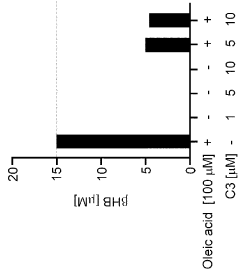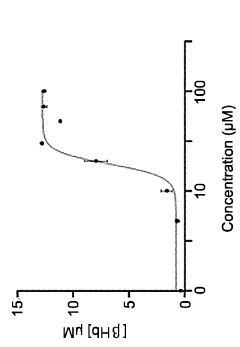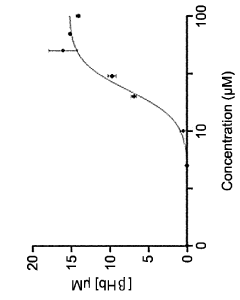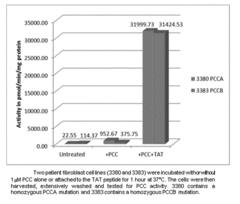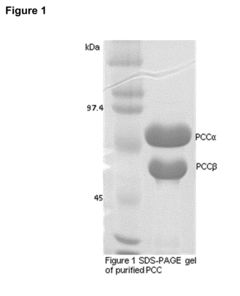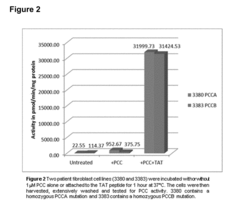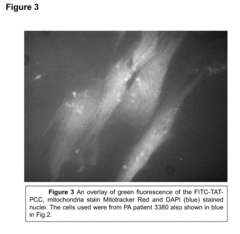Propionic Acid: Mechanisms and Effects on Human Health
JUL 3, 20259 MIN READ
Generate Your Research Report Instantly with AI Agent
Patsnap Eureka helps you evaluate technical feasibility & market potential.
Propionic Acid Overview and Research Objectives
Propionic acid, a short-chain fatty acid, has garnered significant attention in recent years due to its diverse applications and potential impacts on human health. This organic compound, naturally occurring in some foods and produced by gut bacteria, plays a crucial role in various biological processes. The evolution of propionic acid research has seen a shift from its traditional industrial uses to a growing focus on its physiological effects and therapeutic potential.
The primary objective of this technical research report is to provide a comprehensive overview of propionic acid, exploring its mechanisms of action and effects on human health. By examining the historical context and current state of knowledge, we aim to identify key areas for future investigation and potential applications in healthcare and nutrition.
Propionic acid's journey in scientific research began with its discovery in the mid-19th century, initially recognized for its preservative properties. Over time, its significance in human physiology became increasingly apparent, particularly in gut health and metabolism. Recent advancements in microbiome research have further highlighted the importance of propionic acid as a metabolite produced by beneficial gut bacteria.
The technological landscape surrounding propionic acid has evolved rapidly, with improved analytical techniques enabling more precise measurements of its concentrations in biological samples. This has facilitated a deeper understanding of its distribution and dynamics within the human body. Concurrently, progress in molecular biology and biochemistry has shed light on the cellular mechanisms through which propionic acid exerts its effects.
As we delve into the mechanisms and health effects of propionic acid, several key questions emerge: How does propionic acid interact with various cellular pathways? What are its specific roles in gut health, immune function, and metabolism? Can modulation of propionic acid levels be leveraged for therapeutic purposes? These inquiries form the foundation of our research objectives, guiding our exploration of this multifaceted compound.
The scope of this report encompasses both the direct effects of exogenous propionic acid and the implications of endogenous production by gut microbiota. We will examine its absorption, distribution, metabolism, and excretion, as well as its interactions with various physiological systems. Additionally, we will explore potential applications in disease prevention and treatment, considering both benefits and potential risks associated with propionic acid modulation.
The primary objective of this technical research report is to provide a comprehensive overview of propionic acid, exploring its mechanisms of action and effects on human health. By examining the historical context and current state of knowledge, we aim to identify key areas for future investigation and potential applications in healthcare and nutrition.
Propionic acid's journey in scientific research began with its discovery in the mid-19th century, initially recognized for its preservative properties. Over time, its significance in human physiology became increasingly apparent, particularly in gut health and metabolism. Recent advancements in microbiome research have further highlighted the importance of propionic acid as a metabolite produced by beneficial gut bacteria.
The technological landscape surrounding propionic acid has evolved rapidly, with improved analytical techniques enabling more precise measurements of its concentrations in biological samples. This has facilitated a deeper understanding of its distribution and dynamics within the human body. Concurrently, progress in molecular biology and biochemistry has shed light on the cellular mechanisms through which propionic acid exerts its effects.
As we delve into the mechanisms and health effects of propionic acid, several key questions emerge: How does propionic acid interact with various cellular pathways? What are its specific roles in gut health, immune function, and metabolism? Can modulation of propionic acid levels be leveraged for therapeutic purposes? These inquiries form the foundation of our research objectives, guiding our exploration of this multifaceted compound.
The scope of this report encompasses both the direct effects of exogenous propionic acid and the implications of endogenous production by gut microbiota. We will examine its absorption, distribution, metabolism, and excretion, as well as its interactions with various physiological systems. Additionally, we will explore potential applications in disease prevention and treatment, considering both benefits and potential risks associated with propionic acid modulation.
Market Analysis of Propionic Acid Applications
The global market for propionic acid has been experiencing steady growth, driven by its diverse applications across various industries. The food and feed industry remains the largest consumer of propionic acid, accounting for a significant portion of the market share. In this sector, propionic acid is primarily used as a preservative and mold inhibitor in animal feed and human food products, extending shelf life and ensuring food safety.
The pharmaceutical industry represents another key market for propionic acid, where it is utilized in the production of various medications and as a precursor for vitamin E synthesis. The growing demand for pharmaceuticals, particularly in emerging economies, is expected to further boost the market for propionic acid in this sector.
In the agriculture sector, propionic acid finds application as a crop protection agent and in the formulation of herbicides. The increasing focus on sustainable agriculture practices and the need for improved crop yields are likely to drive the demand for propionic acid in this market segment.
The chemical industry also contributes significantly to the propionic acid market, using it as an intermediate in the production of cellulose acetate propionate, propionate esters, and other chemicals. The expanding chemical manufacturing sector in Asia-Pacific countries is expected to create new opportunities for propionic acid suppliers.
Geographically, North America and Europe have traditionally been the largest markets for propionic acid, owing to their well-established food and feed industries. However, the Asia-Pacific region is emerging as a rapidly growing market, driven by increasing industrialization, rising disposable incomes, and changing dietary habits.
Market analysts project a compound annual growth rate (CAGR) for the global propionic acid market in the coming years, with factors such as increasing meat consumption, growing awareness of food safety, and rising demand for packaged foods contributing to this growth. However, the market faces challenges such as volatility in raw material prices and stringent regulations regarding the use of chemical preservatives in food products.
As environmental concerns gain prominence, there is a growing interest in bio-based propionic acid production methods. This trend is likely to shape the future of the propionic acid market, with several companies investing in research and development of sustainable production processes.
The pharmaceutical industry represents another key market for propionic acid, where it is utilized in the production of various medications and as a precursor for vitamin E synthesis. The growing demand for pharmaceuticals, particularly in emerging economies, is expected to further boost the market for propionic acid in this sector.
In the agriculture sector, propionic acid finds application as a crop protection agent and in the formulation of herbicides. The increasing focus on sustainable agriculture practices and the need for improved crop yields are likely to drive the demand for propionic acid in this market segment.
The chemical industry also contributes significantly to the propionic acid market, using it as an intermediate in the production of cellulose acetate propionate, propionate esters, and other chemicals. The expanding chemical manufacturing sector in Asia-Pacific countries is expected to create new opportunities for propionic acid suppliers.
Geographically, North America and Europe have traditionally been the largest markets for propionic acid, owing to their well-established food and feed industries. However, the Asia-Pacific region is emerging as a rapidly growing market, driven by increasing industrialization, rising disposable incomes, and changing dietary habits.
Market analysts project a compound annual growth rate (CAGR) for the global propionic acid market in the coming years, with factors such as increasing meat consumption, growing awareness of food safety, and rising demand for packaged foods contributing to this growth. However, the market faces challenges such as volatility in raw material prices and stringent regulations regarding the use of chemical preservatives in food products.
As environmental concerns gain prominence, there is a growing interest in bio-based propionic acid production methods. This trend is likely to shape the future of the propionic acid market, with several companies investing in research and development of sustainable production processes.
Current Understanding and Challenges in Propionic Acid Research
Propionic acid research has made significant strides in recent years, advancing our understanding of its mechanisms and effects on human health. Current research focuses on several key areas, including its role in the gut microbiome, metabolic processes, and potential therapeutic applications.
In the gut microbiome, propionic acid is recognized as a crucial short-chain fatty acid produced by bacterial fermentation of dietary fibers. Studies have shown that it plays a vital role in maintaining intestinal homeostasis, modulating immune responses, and influencing gut-brain communication. However, the exact mechanisms by which propionic acid exerts these effects are still not fully elucidated, presenting an ongoing challenge for researchers.
Metabolically, propionic acid has been found to impact glucose metabolism, lipid synthesis, and energy homeostasis. Recent investigations have revealed its potential in regulating appetite and body weight, suggesting a possible role in obesity management. Nevertheless, the complex interplay between propionic acid and various metabolic pathways remains a subject of intense study, with many questions yet to be answered.
The therapeutic potential of propionic acid has garnered increasing attention, particularly in the context of inflammatory bowel diseases, colorectal cancer, and neurological disorders. While preliminary findings are promising, translating these results into effective clinical applications poses significant challenges. Researchers are grappling with issues such as optimal dosing, delivery methods, and potential side effects.
One of the major challenges in propionic acid research is the difficulty in accurately measuring its concentrations in various tissues and bodily fluids. Current analytical methods often lack the sensitivity and specificity required for precise quantification, hindering progress in understanding its distribution and kinetics in the human body.
Another significant hurdle is the complexity of propionic acid's interactions with other metabolites and signaling molecules. Its effects are often context-dependent, varying based on factors such as diet, gut microbiome composition, and overall health status. Unraveling these intricate relationships requires sophisticated experimental designs and advanced analytical techniques.
The potential long-term effects of altered propionic acid levels on human health remain a critical area of investigation. While short-term studies have provided valuable insights, longitudinal research is needed to fully comprehend the implications of chronic exposure to varying levels of propionic acid, particularly in the context of modern dietary patterns and lifestyle factors.
In the gut microbiome, propionic acid is recognized as a crucial short-chain fatty acid produced by bacterial fermentation of dietary fibers. Studies have shown that it plays a vital role in maintaining intestinal homeostasis, modulating immune responses, and influencing gut-brain communication. However, the exact mechanisms by which propionic acid exerts these effects are still not fully elucidated, presenting an ongoing challenge for researchers.
Metabolically, propionic acid has been found to impact glucose metabolism, lipid synthesis, and energy homeostasis. Recent investigations have revealed its potential in regulating appetite and body weight, suggesting a possible role in obesity management. Nevertheless, the complex interplay between propionic acid and various metabolic pathways remains a subject of intense study, with many questions yet to be answered.
The therapeutic potential of propionic acid has garnered increasing attention, particularly in the context of inflammatory bowel diseases, colorectal cancer, and neurological disorders. While preliminary findings are promising, translating these results into effective clinical applications poses significant challenges. Researchers are grappling with issues such as optimal dosing, delivery methods, and potential side effects.
One of the major challenges in propionic acid research is the difficulty in accurately measuring its concentrations in various tissues and bodily fluids. Current analytical methods often lack the sensitivity and specificity required for precise quantification, hindering progress in understanding its distribution and kinetics in the human body.
Another significant hurdle is the complexity of propionic acid's interactions with other metabolites and signaling molecules. Its effects are often context-dependent, varying based on factors such as diet, gut microbiome composition, and overall health status. Unraveling these intricate relationships requires sophisticated experimental designs and advanced analytical techniques.
The potential long-term effects of altered propionic acid levels on human health remain a critical area of investigation. While short-term studies have provided valuable insights, longitudinal research is needed to fully comprehend the implications of chronic exposure to varying levels of propionic acid, particularly in the context of modern dietary patterns and lifestyle factors.
Existing Mechanisms of Propionic Acid on Human Health
01 Antimicrobial effects of propionic acid
Propionic acid exhibits strong antimicrobial properties, making it effective against various microorganisms. It is commonly used as a preservative in food and feed products to inhibit the growth of mold and bacteria, thereby extending shelf life and improving safety.- Antimicrobial effects: Propionic acid exhibits antimicrobial properties, making it effective against various microorganisms. It is commonly used as a preservative in food and feed products to inhibit the growth of mold and bacteria, thereby extending shelf life and improving product safety.
- Industrial applications: Propionic acid finds applications in various industrial processes, including the production of cellulose plastics, herbicides, and pharmaceuticals. It is also used as a chemical intermediate in the synthesis of other compounds, such as propionate esters and propionitrile.
- Agricultural uses: In agriculture, propionic acid is utilized as a grain preservative and silage additive. It helps prevent spoilage and mold growth in stored grains and improves the fermentation process in silage production, leading to better quality animal feed.
- Metabolic effects: Propionic acid plays a role in metabolism, particularly in ruminant animals. It serves as a precursor for glucose production in the liver and can influence energy metabolism. In humans, it may have effects on gut microbiota and potentially impact various physiological processes.
- Chemical synthesis and production: Various methods for synthesizing and producing propionic acid have been developed. These include fermentation processes using specific microorganisms, as well as chemical synthesis routes such as the hydrocarboxylation of ethylene or the oxidation of propionaldehyde.
02 Industrial production of propionic acid
Various methods for the industrial production of propionic acid have been developed, including fermentation processes using specific bacterial strains and chemical synthesis routes. These methods aim to improve yield, efficiency, and cost-effectiveness in large-scale production.Expand Specific Solutions03 Applications in animal feed
Propionic acid and its salts are widely used in animal feed as preservatives and growth promoters. They help prevent mold growth in feed, improve feed efficiency, and contribute to better animal health and performance in livestock and poultry production.Expand Specific Solutions04 Use in pharmaceutical and cosmetic industries
Propionic acid finds applications in pharmaceutical and cosmetic formulations. It is used as a pH adjuster, preservative, and in the synthesis of various pharmaceutical compounds. In cosmetics, it helps maintain product stability and prevents microbial contamination.Expand Specific Solutions05 Environmental and safety considerations
While propionic acid offers numerous benefits, its use also requires consideration of environmental and safety aspects. Research focuses on developing eco-friendly production methods, assessing potential environmental impacts, and ensuring safe handling and application in various industries.Expand Specific Solutions
Key Stakeholders in Propionic Acid Research and Industry
The competitive landscape for research on propionic acid's mechanisms and health effects is diverse and evolving. The field is in a growth phase, with increasing market interest driven by potential applications in pharmaceuticals, food science, and healthcare. The global propionic acid market size is projected to expand significantly in the coming years. Technologically, the research is advancing but still developing, with varying levels of maturity across different applications. Key players include academic institutions like Jiangnan University and Zhejiang University, alongside pharmaceutical companies such as Moderna and AstraZeneca. Government entities like the US Government and research foundations are also contributing significantly. The involvement of diverse stakeholders indicates a complex and competitive research environment with potential for breakthrough discoveries.
Mayo Foundation for Medical Education & Research
Technical Solution: Mayo Clinic has conducted extensive research on propionic acid's effects on human health, particularly focusing on its role in gut microbiome and metabolic disorders. Their approach involves using advanced metabolomics techniques to analyze propionic acid levels in blood and fecal samples[1]. They have developed a proprietary method for quantifying short-chain fatty acids, including propionic acid, in biological samples with high precision[2]. This method allows for the investigation of propionic acid's role in various health conditions, such as autism spectrum disorders, obesity, and inflammatory bowel diseases[3]. Mayo Clinic researchers have also explored the potential therapeutic applications of propionic acid in managing certain metabolic conditions[4].
Strengths: Cutting-edge metabolomics techniques, comprehensive approach to studying propionic acid's health effects, potential for developing targeted therapies. Weaknesses: Research primarily focused on clinical aspects, may lack industrial applications.
Dow Global Technologies LLC
Technical Solution: Dow has developed innovative production methods for propionic acid, focusing on sustainability and efficiency. Their approach utilizes a novel catalytic process that converts renewable feedstocks into propionic acid with high yield and selectivity[5]. This process operates at lower temperatures and pressures compared to traditional methods, resulting in reduced energy consumption and greenhouse gas emissions[6]. Dow has also implemented advanced purification techniques to ensure high-quality propionic acid suitable for various applications, including food preservation and pharmaceutical intermediates[7]. Their research extends to studying the antimicrobial properties of propionic acid and its derivatives, aiming to develop more effective preservatives for the food industry[8].
Strengths: Sustainable production methods, high-quality product, diverse applications in food and pharmaceuticals. Weaknesses: May face competition from bio-based production methods, potential regulatory challenges in some markets.
Critical Research Findings on Propionic Acid Effects
Use of propionate for decreasing ketone production
PatentWO2023166071A1
Innovation
- The use of propionic acid in therapeutically effective amounts to decrease ketone production and prevent or treat ketoacidosis by reducing plasma ketone levels, thereby addressing the underlying metabolic derangements without harming cellular viability.
Propionyl-coa carboxylase compositions and uses thereof
PatentInactiveUS20180140688A1
Innovation
- Development of compositions and methods to deliver isolated human propionyl-CoA carboxylase, including its alpha and beta chain proteins, to the intracellular mitochondrial site using cell-penetrating proteins like TAT, ensuring therapeutic effectiveness.
Regulatory Framework for Propionic Acid Use
The regulatory framework for propionic acid use is complex and multifaceted, involving various governmental agencies and international bodies. In the United States, the Food and Drug Administration (FDA) plays a crucial role in regulating propionic acid as a food additive. The FDA has classified propionic acid as Generally Recognized as Safe (GRAS) when used as a preservative in food products. This designation allows for its use in specified quantities without the need for premarket approval.
The Environmental Protection Agency (EPA) also oversees the use of propionic acid, particularly in non-food applications such as pesticides and industrial processes. The EPA has established guidelines for the safe handling and disposal of propionic acid to minimize environmental impact and protect human health.
Internationally, the Joint FAO/WHO Expert Committee on Food Additives (JECFA) has evaluated the safety of propionic acid and its salts. JECFA has established an Acceptable Daily Intake (ADI) for propionic acid, which serves as a guideline for regulatory bodies worldwide. The European Food Safety Authority (EFSA) has also conducted its own safety assessments and provides recommendations for the use of propionic acid in food products within the European Union.
Occupational safety regulations regarding propionic acid are enforced by agencies such as the Occupational Safety and Health Administration (OSHA) in the United States. OSHA has set permissible exposure limits (PELs) for propionic acid in workplace environments to protect workers from potential health hazards.
The transportation of propionic acid is regulated by various agencies, including the Department of Transportation (DOT) in the United States and the International Maritime Organization (IMO) for international shipments. These regulations ensure the safe handling and transport of propionic acid to prevent accidents and minimize risks to human health and the environment.
Labeling requirements for products containing propionic acid are also subject to regulatory oversight. In many jurisdictions, manufacturers are required to disclose the presence of propionic acid on product labels, particularly in food and cosmetic applications. These labeling regulations aim to provide consumers with information about the ingredients in the products they use.
As research on the health effects of propionic acid continues to evolve, regulatory frameworks are periodically updated to reflect new scientific findings. Regulatory bodies conduct ongoing reviews of safety data and may adjust guidelines and restrictions accordingly. This dynamic approach ensures that the use of propionic acid remains aligned with current scientific understanding and continues to prioritize public health and safety.
The Environmental Protection Agency (EPA) also oversees the use of propionic acid, particularly in non-food applications such as pesticides and industrial processes. The EPA has established guidelines for the safe handling and disposal of propionic acid to minimize environmental impact and protect human health.
Internationally, the Joint FAO/WHO Expert Committee on Food Additives (JECFA) has evaluated the safety of propionic acid and its salts. JECFA has established an Acceptable Daily Intake (ADI) for propionic acid, which serves as a guideline for regulatory bodies worldwide. The European Food Safety Authority (EFSA) has also conducted its own safety assessments and provides recommendations for the use of propionic acid in food products within the European Union.
Occupational safety regulations regarding propionic acid are enforced by agencies such as the Occupational Safety and Health Administration (OSHA) in the United States. OSHA has set permissible exposure limits (PELs) for propionic acid in workplace environments to protect workers from potential health hazards.
The transportation of propionic acid is regulated by various agencies, including the Department of Transportation (DOT) in the United States and the International Maritime Organization (IMO) for international shipments. These regulations ensure the safe handling and transport of propionic acid to prevent accidents and minimize risks to human health and the environment.
Labeling requirements for products containing propionic acid are also subject to regulatory oversight. In many jurisdictions, manufacturers are required to disclose the presence of propionic acid on product labels, particularly in food and cosmetic applications. These labeling regulations aim to provide consumers with information about the ingredients in the products they use.
As research on the health effects of propionic acid continues to evolve, regulatory frameworks are periodically updated to reflect new scientific findings. Regulatory bodies conduct ongoing reviews of safety data and may adjust guidelines and restrictions accordingly. This dynamic approach ensures that the use of propionic acid remains aligned with current scientific understanding and continues to prioritize public health and safety.
Safety and Risk Assessment of Propionic Acid Exposure
The safety and risk assessment of propionic acid exposure is a critical aspect of understanding its potential impact on human health. Propionic acid, a naturally occurring carboxylic acid, is widely used in various industries, including food preservation, pharmaceuticals, and agriculture. As such, it is essential to evaluate the potential risks associated with its use and exposure.
Acute exposure to propionic acid can cause irritation to the eyes, skin, and respiratory tract. In high concentrations, it may lead to severe burns and respiratory distress. Chronic exposure, although less common, has been associated with potential long-term health effects, including respiratory issues and skin sensitization. However, the severity of these effects largely depends on the concentration and duration of exposure.
Occupational exposure limits have been established to minimize the risks associated with propionic acid in workplace settings. The Occupational Safety and Health Administration (OSHA) has set a permissible exposure limit (PEL) of 10 parts per million (ppm) for an 8-hour time-weighted average. The National Institute for Occupational Safety and Health (NIOSH) recommends a more conservative limit of 10 ppm for a 10-hour workday.
Environmental risk assessments have shown that propionic acid, when released into the environment, generally poses a low risk to aquatic and terrestrial ecosystems. Its rapid biodegradability and low potential for bioaccumulation contribute to its relatively benign environmental profile. However, large-scale releases or spills may cause localized pH changes in water bodies, potentially affecting aquatic life.
In terms of consumer safety, propionic acid is considered generally recognized as safe (GRAS) by the U.S. Food and Drug Administration (FDA) when used as a food additive. Its use in food preservation helps prevent the growth of mold and bacteria, thereby extending shelf life and ensuring food safety. The Joint FAO/WHO Expert Committee on Food Additives (JECFA) has established an acceptable daily intake (ADI) of 0-6 mg/kg body weight for propionic acid and its salts.
Risk mitigation strategies for propionic acid exposure include proper handling and storage procedures, use of personal protective equipment, and implementation of engineering controls in industrial settings. Regular monitoring of air quality in workplaces where propionic acid is used is crucial to ensure compliance with exposure limits and protect worker health.
Overall, while propionic acid does present certain risks, particularly in concentrated forms or during acute exposure, its widespread use and established safety protocols suggest that it can be managed effectively when proper precautions are taken. Continued research and vigilance in monitoring its effects on human health and the environment remain important for ensuring its safe use across various applications.
Acute exposure to propionic acid can cause irritation to the eyes, skin, and respiratory tract. In high concentrations, it may lead to severe burns and respiratory distress. Chronic exposure, although less common, has been associated with potential long-term health effects, including respiratory issues and skin sensitization. However, the severity of these effects largely depends on the concentration and duration of exposure.
Occupational exposure limits have been established to minimize the risks associated with propionic acid in workplace settings. The Occupational Safety and Health Administration (OSHA) has set a permissible exposure limit (PEL) of 10 parts per million (ppm) for an 8-hour time-weighted average. The National Institute for Occupational Safety and Health (NIOSH) recommends a more conservative limit of 10 ppm for a 10-hour workday.
Environmental risk assessments have shown that propionic acid, when released into the environment, generally poses a low risk to aquatic and terrestrial ecosystems. Its rapid biodegradability and low potential for bioaccumulation contribute to its relatively benign environmental profile. However, large-scale releases or spills may cause localized pH changes in water bodies, potentially affecting aquatic life.
In terms of consumer safety, propionic acid is considered generally recognized as safe (GRAS) by the U.S. Food and Drug Administration (FDA) when used as a food additive. Its use in food preservation helps prevent the growth of mold and bacteria, thereby extending shelf life and ensuring food safety. The Joint FAO/WHO Expert Committee on Food Additives (JECFA) has established an acceptable daily intake (ADI) of 0-6 mg/kg body weight for propionic acid and its salts.
Risk mitigation strategies for propionic acid exposure include proper handling and storage procedures, use of personal protective equipment, and implementation of engineering controls in industrial settings. Regular monitoring of air quality in workplaces where propionic acid is used is crucial to ensure compliance with exposure limits and protect worker health.
Overall, while propionic acid does present certain risks, particularly in concentrated forms or during acute exposure, its widespread use and established safety protocols suggest that it can be managed effectively when proper precautions are taken. Continued research and vigilance in monitoring its effects on human health and the environment remain important for ensuring its safe use across various applications.
Unlock deeper insights with Patsnap Eureka Quick Research — get a full tech report to explore trends and direct your research. Try now!
Generate Your Research Report Instantly with AI Agent
Supercharge your innovation with Patsnap Eureka AI Agent Platform!

